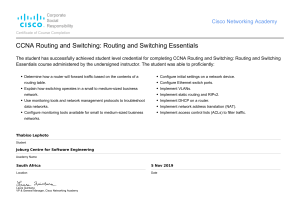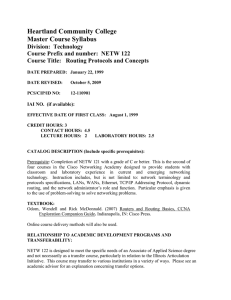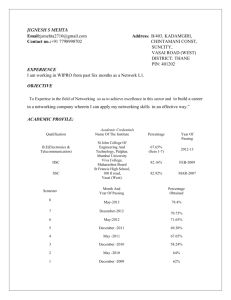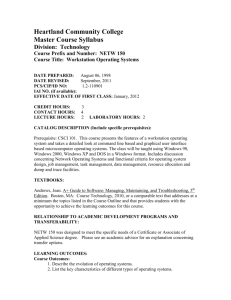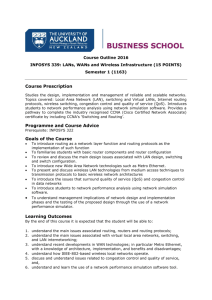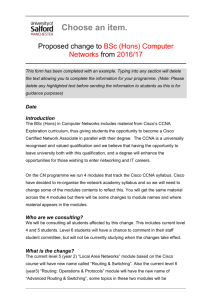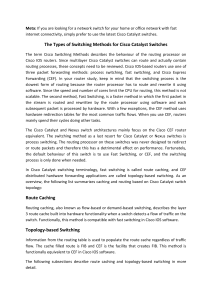NETW223_Nov2009 - Heartland Community College
advertisement
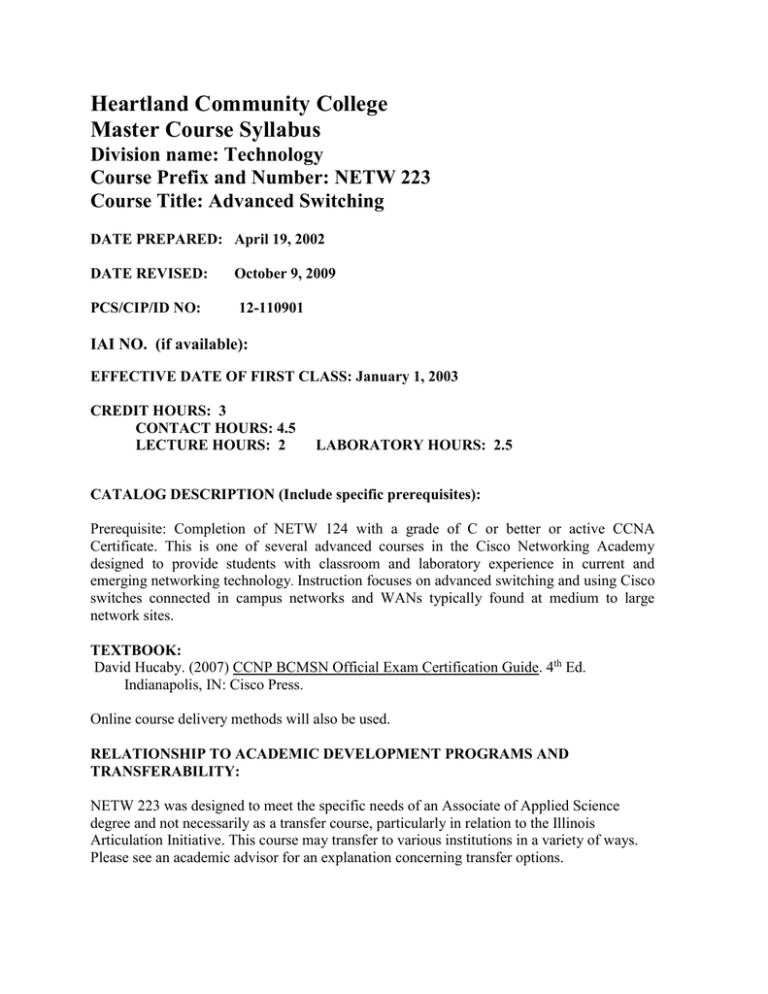
Heartland Community College Master Course Syllabus Division name: Technology Course Prefix and Number: NETW 223 Course Title: Advanced Switching DATE PREPARED: April 19, 2002 DATE REVISED: PCS/CIP/ID NO: October 9, 2009 12-110901 IAI NO. (if available): EFFECTIVE DATE OF FIRST CLASS: January 1, 2003 CREDIT HOURS: 3 CONTACT HOURS: 4.5 LECTURE HOURS: 2 LABORATORY HOURS: 2.5 CATALOG DESCRIPTION (Include specific prerequisites): Prerequisite: Completion of NETW 124 with a grade of C or better or active CCNA Certificate. This is one of several advanced courses in the Cisco Networking Academy designed to provide students with classroom and laboratory experience in current and emerging networking technology. Instruction focuses on advanced switching and using Cisco switches connected in campus networks and WANs typically found at medium to large network sites. TEXTBOOK: David Hucaby. (2007) CCNP BCMSN Official Exam Certification Guide. 4th Ed. Indianapolis, IN: Cisco Press. Online course delivery methods will also be used. RELATIONSHIP TO ACADEMIC DEVELOPMENT PROGRAMS AND TRANSFERABILITY: NETW 223 was designed to meet the specific needs of an Associate of Applied Science degree and not necessarily as a transfer course, particularly in relation to the Illinois Articulation Initiative. This course may transfer to various institutions in a variety of ways. Please see an academic advisor for an explanation concerning transfer options. COURSE OBJECTIVES (Learning Outcomes) Outcomes 1. Demonstrate a knowledge overview of a Campus Network. 2. Select and implement the technologies necessary to redistribute between and to support multiple, advanced IP switching protocols, given a network specification. 3. Configure and test switch connectivity in a given a network specification. General Education Outcomes Range of Assessment Methods Exam Exam PS2 Exam, Lab Assignments COURSE/LAB OUTLINE: 1. Multilayer Switching Network Design Basics 2. Network Overview 3. Network Design Considerations 4. Hierarchical Design 5. Identifying Cisco Products for Multilayer Switching Networks 6. User Interface 7. Product Lines 8. Layer Product Selection 9. Connecting the Campus 10. Network Cabling 11. Building the Switch Block 12. Packet Formats 13. Layer 2 configuration 14. Common Workgroups with Virtual LANs 15. Managing Redundant Links with the Spanning Tree Protocol 16. Link Aggregation 17. Unicast Layer 3 Configuration 18. IP Communication 19. Maintaining Routes 20. Multilayer Switching 21. Fault-Tolerant Routing with Hot Standby Routing Protocol 22. IP Multicast Configuration 23. Network Transmission Models 24. Multicast Addressing 25. Multicast Group Management 26. IP Multicast Routing Configuration 27. Multicast Routing Basics 28. DVMRP Overview 29. Access Control 30. Managing Network Devices 31. Access Layer Policy 32. Distribution Layer policy 33. Core Layer Policy 34. Classful and Classless Interior Routing Protocols METHOD OF EVALUATION (Tests/Exams, Grading System): Exams/Assignments: Students will be evaluated by computer laboratory exercises and examinations. Labs Exams Final Exam 50% 20% 30% Grades will be based on the following scale: A 90 – 100% B 80 – 89% C 70 – 79% D 60 – 69% F Below 60% REQUIRED WRITING AND READING: Required reading consists of online lessons delivered via Internet connection in the classroom. Additional reading and writing assignments may be assigned by the instructor.
